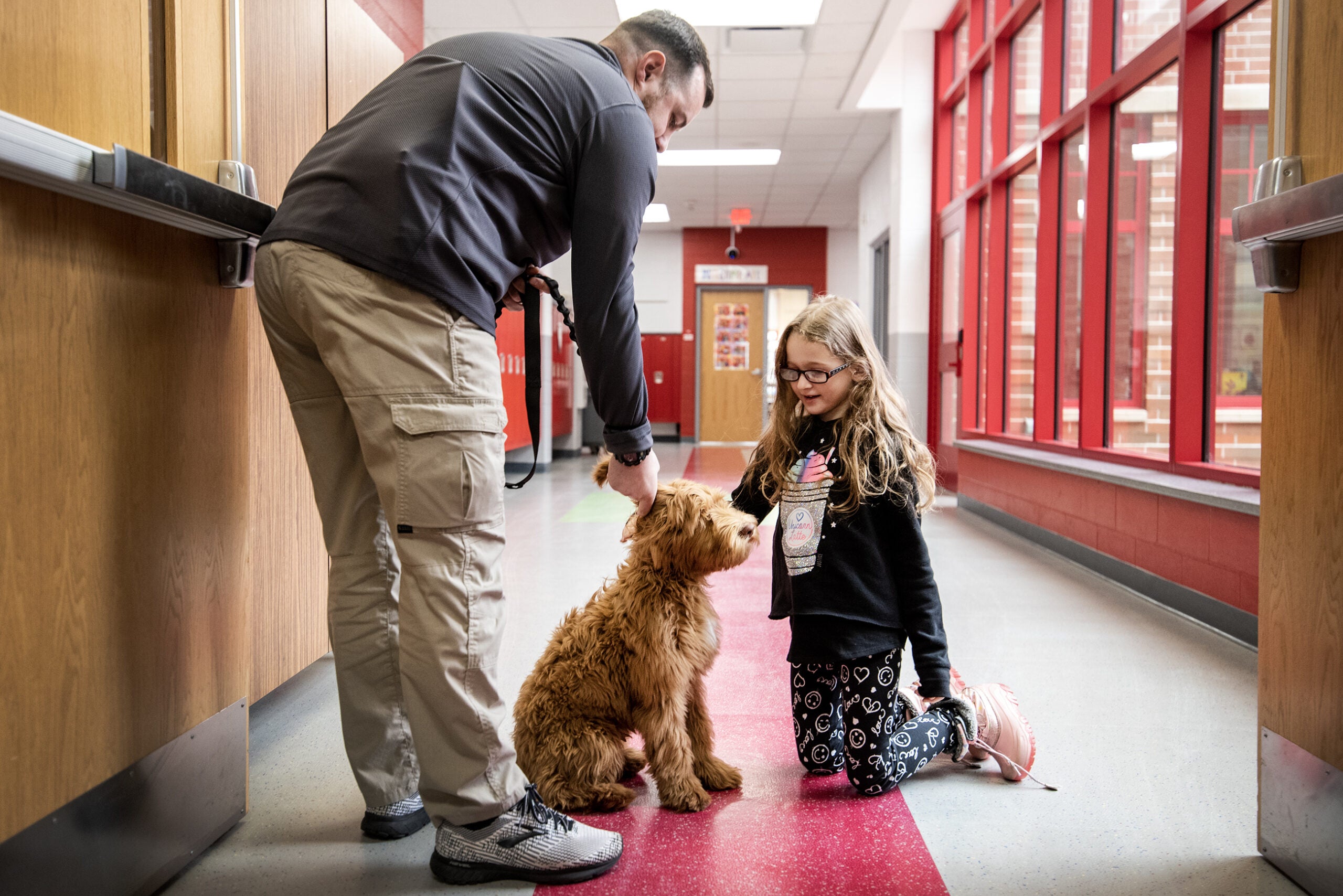Larry Meiller finds out how to make some remedies at home that can help keep your pet healthy and happy.
Featured in this Show
-
Veterinarian: Homemade Remedies For Pets Are Easy To Make, Use
There are a lot of great products on the market to help keep pets healthy, but there are also a wide variety that can easily be made at home.
Dr. Carrie Donahue is the owner and founder of Full Circle Holistic Veterinary Care. She practices holistic and alternative care in addition to providing conventional veterinary services.
Donahue sees several benefits to making home remedies and keeping them on hand. First is price. Even treatments made with high-grade ingredients bought in small quantities will usually be less expensive than a commercial formulation, she said.
Besides saving on the cost of store-bought products, Donahue said that homemade remedies can save pet owners time, stress, and other costs down the road.
“Sometimes you can even save a trip to the vet. Some of the homemade remedies can be used at the first sign of a problem. And in some of these cases, if you can start treating early, you can avoid a trip to the vet altogether,” Donahue said.
Another advantage of making remedies at home is that the pet owner has complete knowledge of and control over what ingredients are used. For Donahue, that means food-grade and natural ingredients.
Protecting Paws During A Wisconsin Winter
Donahue said that even though dog paws are tougher than human feet, they still need to be protected from the cold. In addition, products like sand, salt, and other ice removers used on Wisconsin streets and sidewalks can cause damage to paw pads, Donahue said. There is also the risk of dogs licking their paws after being outdoors and ingesting those chemicals.
Donahue recommends paw wax as protection. She said to apply the wax not only to the paw pads, but in-between the toes as well to avoid irritation in that area. She said that two or three applications per week should be enough to protect paws during average outings.
While it’s called paw wax, Donahue said that it can also be used on dry, cracked noses.
And while the recipe should be fine for use with cats, Donahue said that she hasn’t seen it used herself for felines.
“I think cats are more likely to stay inside in the winter. They may take a couple of steps outside and then they’re back in,” Donahue said.
Dr. Carrie Donahue’s Paw Wax
- 2 oz olive or almond oil
- 2 oz coconut oil
- 1 oz shea butter
- 4 tbsp beeswax
Heat everything together in a double boiler or pan over low heat, then pour into small containers and allow to cool. If there is irritation, add in a drop of lavender essential oil or calendula oil.
DIY First Aid Salve
Just like people, pets are likely to get bumped, scratched or scraped from time to time. A good first aid ointment can speed healing and prevent infection.
Donahue said that while there is quite a bit of flexibility in the components of a first aid salve, for her, calendula is a must-have.
“Calendula is otherwise known as marigold, and it’s a really powerful herb for healing the skin … Other ingredients that I will add in are Echinacea, St. John’s Wort, and Comfrey. All of those are really powerful herbs in their own right, but you can mix and match them in a first aid salve that you make at home,” Donahue said.
The salve can be used as needed for minor scrapes, cuts, abrasions or skin irritations, Donahue said. It would take the place of commercial products like Neosporin or triple protection antibiotic creams, she added.
Dr. Carrie Donahue’s First Aid Salve
- 1 oz beeswax
- 8 oz calendula oil (or other herbal-infused oil, like echinacea, St. John’s wort, or comfrey oil)
- 10-20 drops lavender oil — optional
- Vitamin E (1/2 to 1 capsule) — optional
Heat beeswax and oil together until wax melts. Take off of heat and add lavender oil and Vitamin E if desired. Pour into small containers and allow to cool.
Brushing Pet’s Teeth Important Preventive Medicine
Brushing pets’ teeth can be tricky, but Donahue said that it is just as important for overall health and wellbeing for animals as it is for humans.
Donahue’s very simple tooth cleaning solution is just two ingredients: aloe vera gel and hydrogen peroxide. She said that the hydrogen peroxide is an effective antibacterial and antiseptic ingredient that will address plaque developing on the teeth. The aloe vera is soothing and will provide relief for sore gums affected by gingivitis.
The most effective time to apply the solution is before bed, Donahue said. That way, the pet is likely done eating for the day and the solution will have more time to work without being diluted or rubbed off.
Dr. Carrie Donahue’s Teeth Cleaning Solution
Equal parts aloe vera gel and 3 percent hydrogen peroxide
Apply to teeth and gums at bedtime with a square of gauze, a washcloth, or for cats or small dogs, a Q-tip.
Episode Credits
- Larry Meiller Host
- Judith Siers-Poisson Producer
- Dr. Carrie Donahue Guest
Wisconsin Public Radio, © Copyright 2024, Board of Regents of the University of Wisconsin System and Wisconsin Educational Communications Board.

